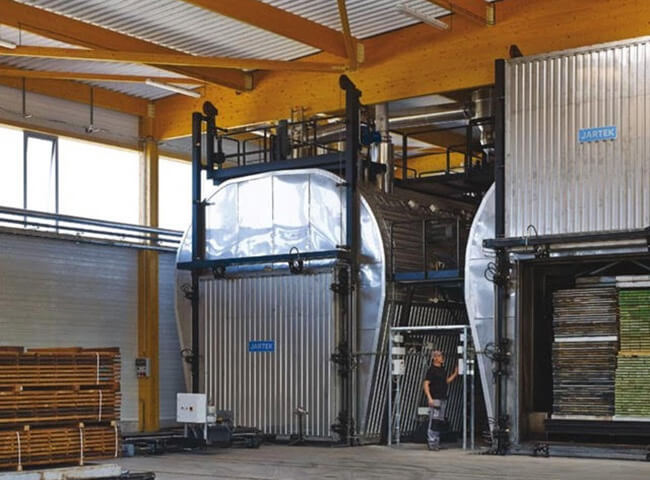
Carbonization of wood occurs through heat-treating. The heat literally caramelizes the naturally occurring sugars in the wood, creating a rich caramel brown colour. The colour of carbonized wood is warmer than the colour that results from fuming/smoking. Because the sugar content of individual boards can vary more dramatically than tannin content, carbonization tends to create even more colour variation than fuming/smoking. For Timeless Wood Floors carbonized products, we sort after carbonization to eliminate extreme variations.
Though controlling the colour in carbonized wood is challenging, we believe that these challenges are greatly outweighed by the beauty this process creates. The richness and natural look of carbonized Oak simply can’t be replicated with topical stain techniques.
It’s important to be aware of two characteristics of carbonized wood. First, the heat treatment makes the wood a bit more brittle, which is why you generally only see engineered wood flooring products that are carbonized. In solid carbonized wood flooring, the tongues would break off too easily when nailed. Second, carbonized wood tends to fade more under UV exposure than the same wood that has not been carbonized. While natural (non-carbonized) Oak changes relatively little when exposed to sunlight, carbonized Oak can fade as much as Walnut, a species known for its photosensitivity. Customers who have intense light conditions in their homes (such as floor-to-ceiling, south-facing windows) should be advised of this before finalizing the selection of a carbonized Oak floor, just as they should for Walnut, Brazilian Cherry, and other species that tend to fade when exposed to too much direct light. Both the brittleness and photosensitivity of carbonized wood depend on the degree of carbonization – the higher the heat, the darker the colour, and the more brittle and photosensitive the wood will be.
Embracing Natural Variation
Due to the enhanced variation created by these reactive colour processes, it is impossible to represent these beautiful floors adequately in a small sample panel. When all we can see are three small pieces, and each is a different colour, it can be shocking. A small panel that shows the extremes only has room for the extremes, and the overall look of the installed floor is lost. For some consumers, it’s hard to imagine how attractive those colours will be when they are sprinkled together in a larger area.
So that customers can fully appreciate these natural colour processes, we encourage them to view as much material as possible to help visualize what the floor will look like when it’s fully installed. Photographs are helpful, but an even better way is to get 2-3 cartons of the flooring and lay them out in the space. We want our customers to experience this beauty before they make their decision, and are willing to take returns if they are not happy with what they see. It rarely happens. When the cartons arrive, be sure to lay out all of the material, spreading the colour variation around so it can be viewed as a whole. Pulling just a handful of planks out and making a decision too quickly is a mistake. Almost always, the colour variation grows on people, and the more area they see, the more they like how natural the floor looks. Rather than being a defect, the variation is truly these products’ greatest asset. Traditional stained floors simply can’t compare to the natural feeling and enduring visual interest created by these special colouring techniques.


